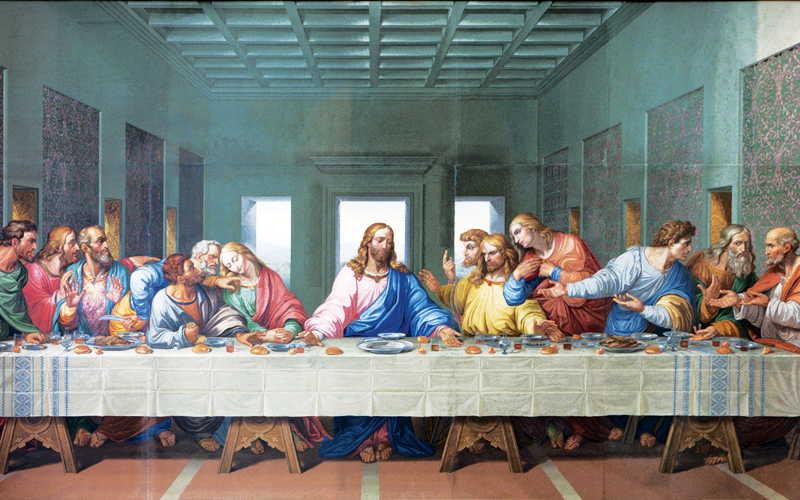During these holy days, we focus our thoughts on Jesus’ suffering, death and resurrection. As we walk these days with him, we might wonder about his earthly life. What was he thinking? Feeling? Seeing? Eating?
This last question intrigued us, so we contacted a biblical scholar and asked him what Jesus ate at the last supper.
“We really don’t know for sure,” says Phil Towner, PhD, executive director and dean of the Nida Institute for Biblical Scholarship, the academic arm of American Bible Society. “Beyond unleavened bread and wine, we just can’t be certain.”
The Passover meal, however, creates a framework for understanding the last supper, which might bring clues to Jesus’ final meal on earth.
We know that he was celebrating Passover, the Jewish feast that commemorates the Israelites’ exodus from slavery. The meal, known today as the Seder, has several key elements that have remained consistent throughout the centuries.
One is the Passover lamb. During Jesus’ time, the lamb would have roasted over an open fire, and participants were required to eat all of it, as mandated in Numbers 9:12.
Next is the unleavened bread, a reminder of God’s swift deliverance—so swift, in fact, that the Israelites didn’t have time to allow the bread to rise.
Another is a bowl of salt water, which commemorates the tears the Israelites shed while in captivity.
Bitter herbs symbolized the bitterness of their bondage. And charoset, a sweet, dark-colored, paste made of fruits and nuts, represents the mortar the Israelites used for bricks.
Wine, considered a royal drink, represents freedom.
Of these elements, the lamb might be a question mark. “We don’t know whether he ate it,” says Dr. Towner. Economics may be part of this: Not all could afford lamb.
Some scholars say the lamb was intentionally omitted because Jesus himself would become the Passover lamb that was to be sacrificed on Good Friday. Therefore, Jesus chose to focus solely on the symbolism of the bread and wine and their connection to his upcoming death.
If lamb wasn’t served, Jesus and his disciples may have had other options. Dried fruits, such as fig, would have been available. Leonardo da Vinci’s famous painting of the last supper shows the group eating fish.
During Jesus’ day, Jews ate two meals: One in late morning, and one in mid-afternoon. But this feast, which had to be celebrated in Jerusalem, was held in the evening and would have gone late into the night.
“There was time for fellowship and sharing,” says Dr. Towner. “There was no rushing it.”
As to where the feast was celebrated, Jesus gave careful instructions: There was a certain man in the city whom the disciples were to see. They would celebrate the Passover at his house.
We don’t know who this man was, says Dr. Towner, but he obviously was a trusted friend and well-to-do because he owned a two-story house with a large guest room. (Mark 14:15).
None of these particulars is mentioned in the Gospels. But what is clear is that Jesus is retelling the Passover story for his disciples and inserting himself in it.
In fact, Dr. Towner says he’s transposing the story into a different key. The key is Jesus himself and the bread and wine—which we know he consumed—is the basis of a new covenant with him, one that brings everlasting life.
Read more posts about: Bible Basics
Thanks to the support of our faithful financial partners, American Bible Society has been engaging people with the life-changing message of God’s Word for more than 200 years.
Help us share God's Word where
needed most.
Sign up to receive free coloring pages and regular email updates from the Bible Blog.




